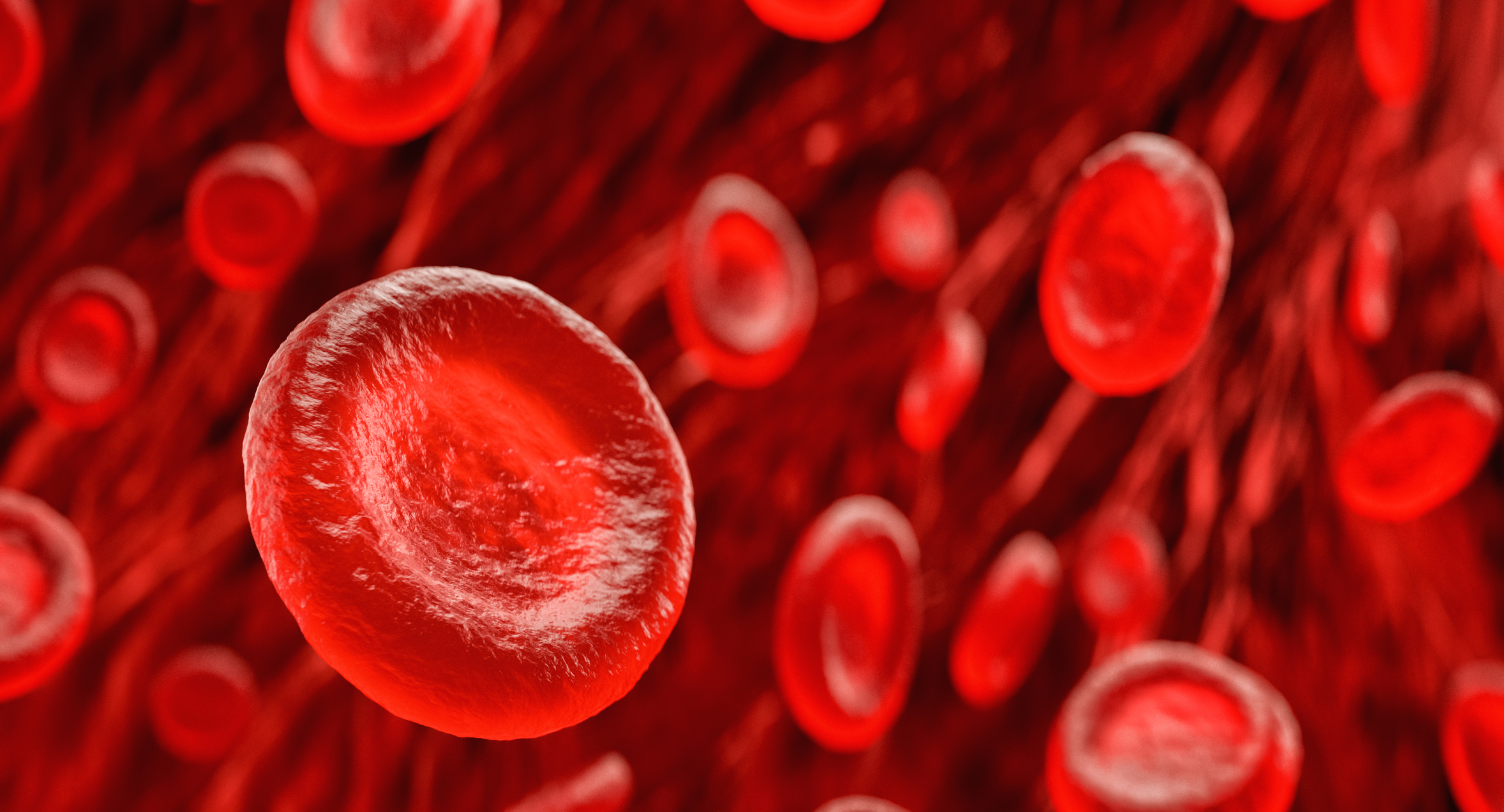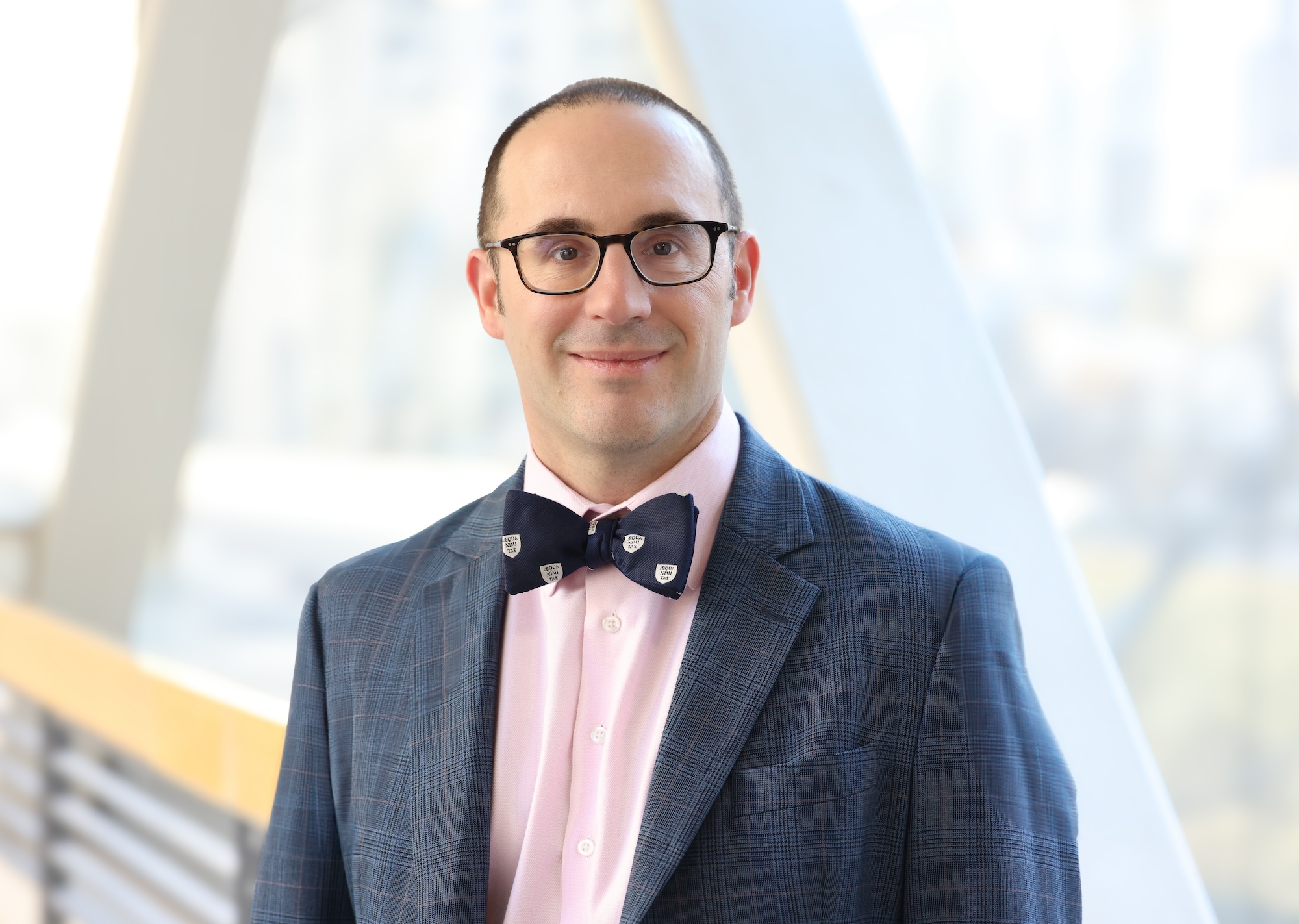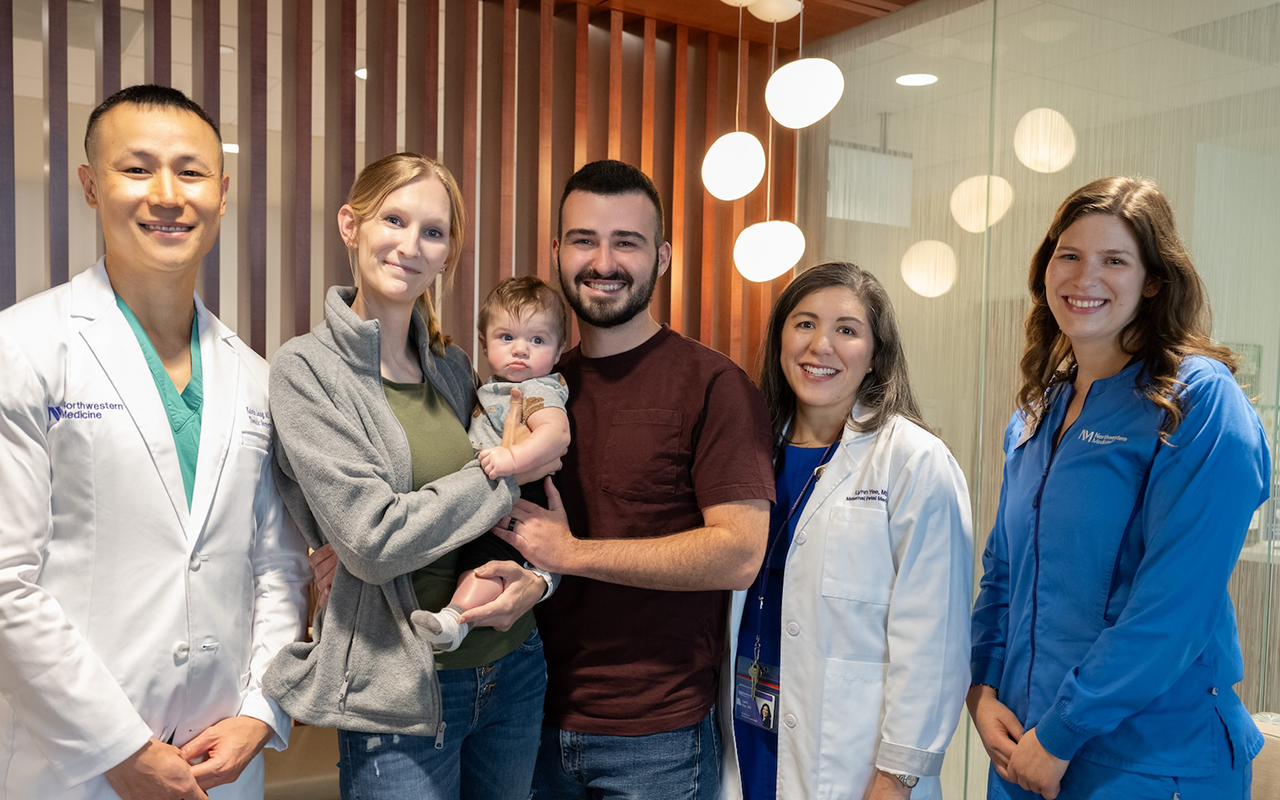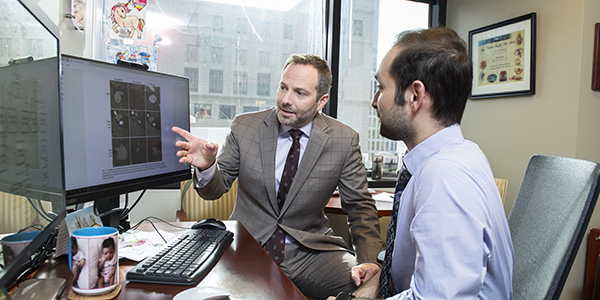Data Detective
by EMILY AYSHFORD
Denise Scholtens decodes data.
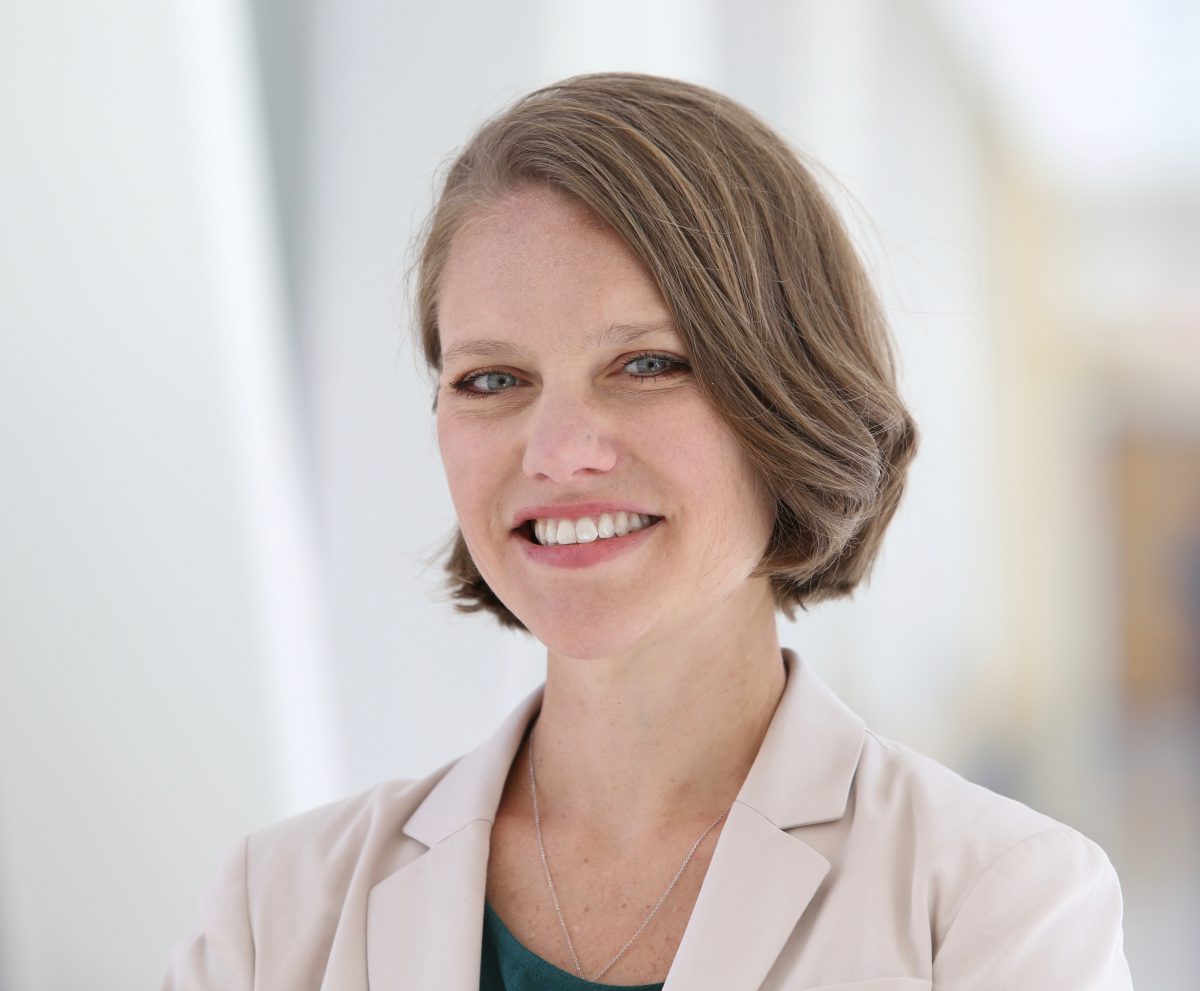
Study data can be interpreted in multiple ways. Sometimes study designs aren’t completely conclusive; other times, subtle components of study design require careful selection and precise application of correct methodology to make sound conclusions.
Shepherding investigators through that process is Denise Scholtens, PhD, chief of Biostatistics in the Department of Preventive Medicine. As a biostatistician, she designs and analyzes research studies, including clinical trials, observational studies, and basic science experiments. She’s good with numbers, but her position often requires another skill altogether: being both humble and tough.
Recently, she found herself in that situation with an investigator who was conducting a retrospective review of cancer data. In the investigator’s preliminary analysis using one methodology, the results supported the hypothesis that the investigator had developed. But when Scholtens and her student took a look at the data, they found the methodological approach was wrong, and the results completely flipped.
That’s not unusual — and neither is the clash that can result. “It led to a healthy discussion, but the key to getting things done is careful listening and offering concerns as to why we aren’t on the same page,” she says. “Biostatisticians are often not the most popular people in the room, but we’ve become pretty used to that role. Instead, we strive to be humble — there is a lot of analytic work that is not glamorous — and we must often be tough when pointing out what the data are really saying. The pairing of words ‘humble and tough’ comes from an essay I read several years ago. As a philosophy for approaching work, it is really motivating for me.”
As the amount of available research data explodes (from experimental data to electronic health-record data) shepherds like Scholtens, who is also a member of the Robert H. Lurie Comprehensive Cancer Center of Northwestern University, are increasingly important. That’s why the new Northwestern University Data Analysis and Coordinating Center (NUDACC), which Scholtens directs, was created. The center will streamline the research process and innovate new methods that can ultimately improve both clinical practice and public health.
“We are scientists in our own right, but the greatest synergy comes when we’re partnering with clinicians or investigators who have questions that apply directly to the care of people,” Scholtens says. “NUDACC will help facilitate even more of that collaboration.”
A perfect blend of math and medicine
Like many biostatisticians, Scholtens was drawn into the field because she was interested in both math and medicine, but wasn’t interested in becoming a clinician. In fact, she started her career as a high school math teacher in Naperville, Illinois. But when her students asked why they needed to learn math, she realized that she continued to wonder about that as well, and longed to use math in an applied way that could help the world.
At the time, Google was a brand-new search engine, and when Scholtens searched for “math, medicine,” the top result was biostatistics.
“It was the perfect blend for me,” she says. “I could use my strengths to help care for people and support research to address healthcare needs. It seemed like a great space to work in.”
She entered a PhD program at Harvard, and when she graduated in 2004, she secured a faculty position at Northwestern. At the time, she was one of only a handful of biostatisticians. Since then, the field of biostatistics has had a serious evolution. Now, the division has 20 faculty members and 20 staff members. As more data have become available, Scholtens and her colleagues have developed new methodological innovations to keep up with it. Machine learning and predictive analytics joined the classic biostatistics toolkit, and scientific discovery, even within the field of biostatistics itself, has continued to expand.
Reaching across the enterprise
We are scientists in our own right, but the greatest synergy comes when we’re partnering with clinicians or investigators who have questions that apply directly to the care of people.Denise Scholtens, PhD
Scholtens collaborates with investigators across the medical spectrum, from oncology to obstetrics, and across Feinberg centers.
One of Scholtens most successful collaborations with investigators has been the Hyperglycemia and Adverse Pregnancy Outcome Follow-Up Study (HAPO FUS). This multi-center project looked at maternal glycemia levels during pregnancy, then examined their association with outcomes, such as large baby size. Scholtens came on board after the original study was completed, but has been involved in follow-up studies, looking at the long-term effects for mother and children, including diabetes and obesity. She coordinates the data for the study with her team and is the primary statistician for the HAPO Metabolomics and Integrated Omics Studies.
“This was my first introduction to working across centers, and the beauty of a large-scale study like this is the rich resources that breed extra investigations,” she says. “There is so much to be learned from genetics and metabolomics studies in HAPO’s population-based setting, and there’s a lot of room for statistical innovation.”
Initial results that Scholtens helps analyze have found that a mother’s glucose level during pregnancy is associated with her child’s body size both at birth and during childhood, and with her own long-term glucose metabolism. Now, the investigators are launching a new multi-center consortium to study glucose monitoring over the entire pregnancy. Northwestern biostatisticians will help run the study, collect data, conduct quality assurance, facilitate regulatory reporting, and, ultimately, analyze the accumulated data.
“This project is exactly the kind of larger- scale project we want to do more of here at Northwestern,” Scholtens says. “That’s why we needed a new center to provide infrastructure for projects like this.”
New center will streamline research process
Launched in August, NUDACC includes multidisciplinary faculty and a staff of statistical analysts and programmers who will provide a more sophisticated infrastructure for conducting larger studies and more impactful work in collaboration with both Feinberg investigators and in multi-center research projects.
“We really want to streamline the research process across the life cyle of studies,” Scholtens says. “We’ve gotten pretty good at identifying when existing methods apply and understanding what statistical tools are out there to help meet data analytic needs, and we can analyze data and facilitate correct interpretation for highly impactful work.”
That may mean more difficult conversations with investigators, but Scholtens knows that comes with the territory. “A lot of times we are significantly less biased in terms of what we think the data are saying,” she says. “We serve as sounding boards.”
The center, along with the whole biostatistics division, is increasingly involved in advocating for reproducible research — the idea that investigators should provide enough information so that another investigator can retrace their path completely and find the same result. Scholtens and her team are developing living documents with explanatory text that can be used to better communicate results.
NUDACC will eventually encompass more than just statistics, thanks to the talented group of people affiliated with the center, according to Scholtens. “I’m so incredibly proud of our really gifted faculty and staff in the division,” she says. “That really motivates me. I’m impressed every day by their work.”
Bringing order out of chaos
Scholtens is also motivated by her three daughters, who are 11, 13, and 15. Outside of work, she and her husband love to spend time with them, traveling as a family and watching them grow into their own unique young women. That sort of observing, listening, teaching, and collaborating spans both her personal and professional lives.
“I like learning about what my scientific colleagues are doing,” she says. “I like being able to provide this unique form of collaboration, and I like committing to a project and seeing it through. I want to be this humble and tough collaborator who partners for wisdom, who can bring order out of chaos for new discovery.”
Photography by Teresa Crawford


